6 Best Neighborhoods to Stay in Paris—According to In-the-Know Locals
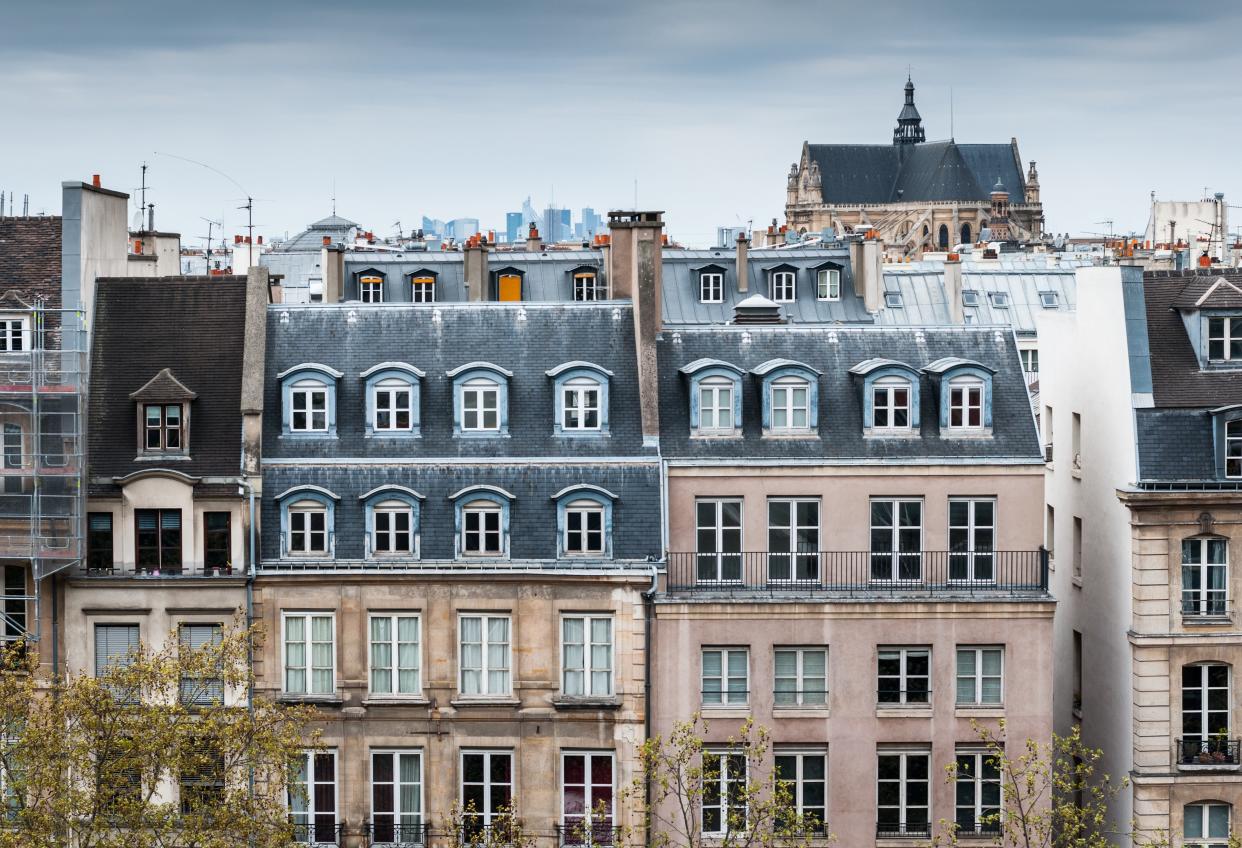
Photo: mmac72/Getty Images
Ask any Parisian about the best neighborhoods to stay in Paris, and they’ll attest: Each quartier has its own distinct character. Within each arrondissement is a patchwork of little villages that form one of the most dynamic cities in the world.
The peak Parisian experience is when you start to feel like a regular. Here, AD shines a light on a selection of quartiers that design and creative professionals in the City of Light call home—and why you should, too, if only for a brief window of time.
1st arrondissement: Palais Royal
Go for: art, design, and inimitably cool brands.
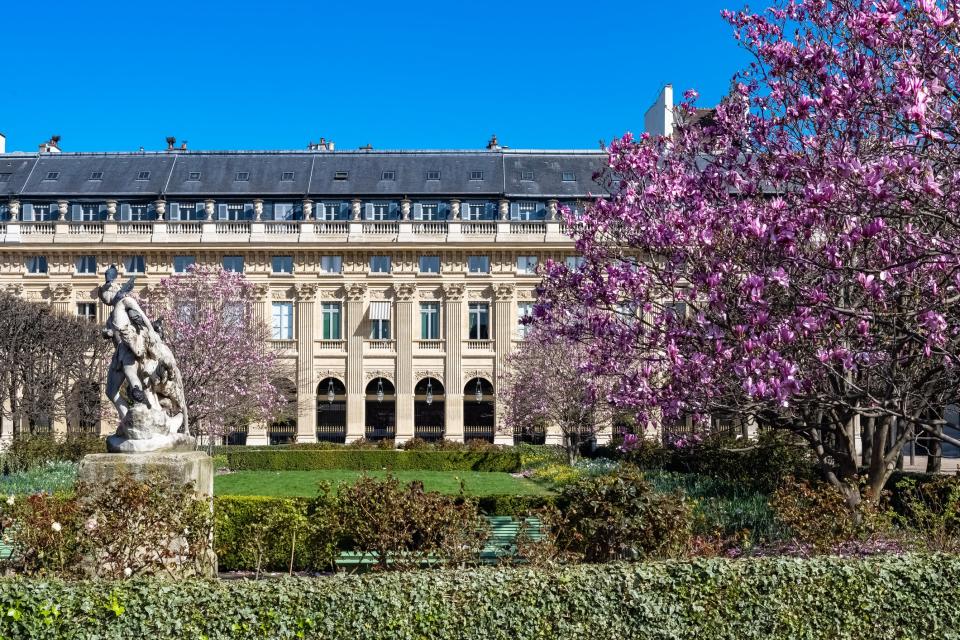
Paris, the Palais-Royal
Dating back to the 17th century, the Palais Royal is known for its walking paths lined by lime and chestnut trees, manicured gardens, and elegant fountains surrounded by scattered green metal chairs. Enclosed by boutiques on the surrounding arcades—with inimitably cool brands like Rick Owens, Pierre Hardy, Acne Studios, and more—it feels cloistered from its bustling environs. It’s one of the most serene pockets of central Paris, just steps from the Louvre and the Tuileries Gardens.
Among the Palais Royal boutiques, you’ll find the contemporary design studio Theoreme Editions. Cofounder David Giroire calls Palais Royal a small town within a big city. “All of the neighbors know each other. It’s one of the most frequented parts of Paris but it stays quiet and private,” Giroire says, an aspect that feels very Left Bank.
In the Palais, the Colonnes de Buren art installation can’t be missed. Artist Daniel Buren’s black-and-white marble-striped columns were installed in 1986. “It creates a playful contrast with the 17th-century palace,” Giroire says. Nearby, you find the Fountains of Pol Bury, designed by the Belgian artist in 1985. “The steel spheres arranged in the reflective pools sit next to Buren’s columns and it’s beautiful to see the works in dialogue.”
Art and design lovers can peruse the gallery Devals, also in the Palais, as well as Villa Atrata by Gil Presti. “Gallery Ibu is also one of our neighbors and they present the great work of Eric Schmitt and Jean Grisoni. I like to go visit my friends at Patrick Fourtin and the Galerie Desprez Bréhéret too.”
In the neighborhood, Giroire recommends checking out the Bourse de Commerce, which houses the Pinault Collection; the Musée des Arts Décoratifs (Museum of Decorative Arts), which is tucked next to the Louvre; and the Bibliothèque Nationale de France (National Library). “I pop by from time to time to see the beautiful study rooms.” For local restaurants, Giroire recommends a short walk to the Japanese neighborhood (around rue Saint Anne) for places like Takara (“the first Japanese restaurant in Europe, which opened in 1958”), Tomo pâtisserie, and Café Verlet. You’ll also find Willi’s Wine Bar, a cozy spot with a lengthy menu of wines from around the world.
Giroire’s choice of neighborhood hotels include the Grand Hotel du Palais Royal, designed by Pierre-Yves Rochon and recently renovated by Leonora Beaubois. “All of the rooms have a stunning view of Place de Valois.” Decorated by Festen, Château Voltaire, from Zadig & Voltaire founder Thierry Gillier, is another favorite. Giroire recommends popping into the hotel’s cocktail bar, La Coquille d’or.
7th arrondissement
Go for: omnipresent Eiffel Tower views and a taste of Left Bank life.
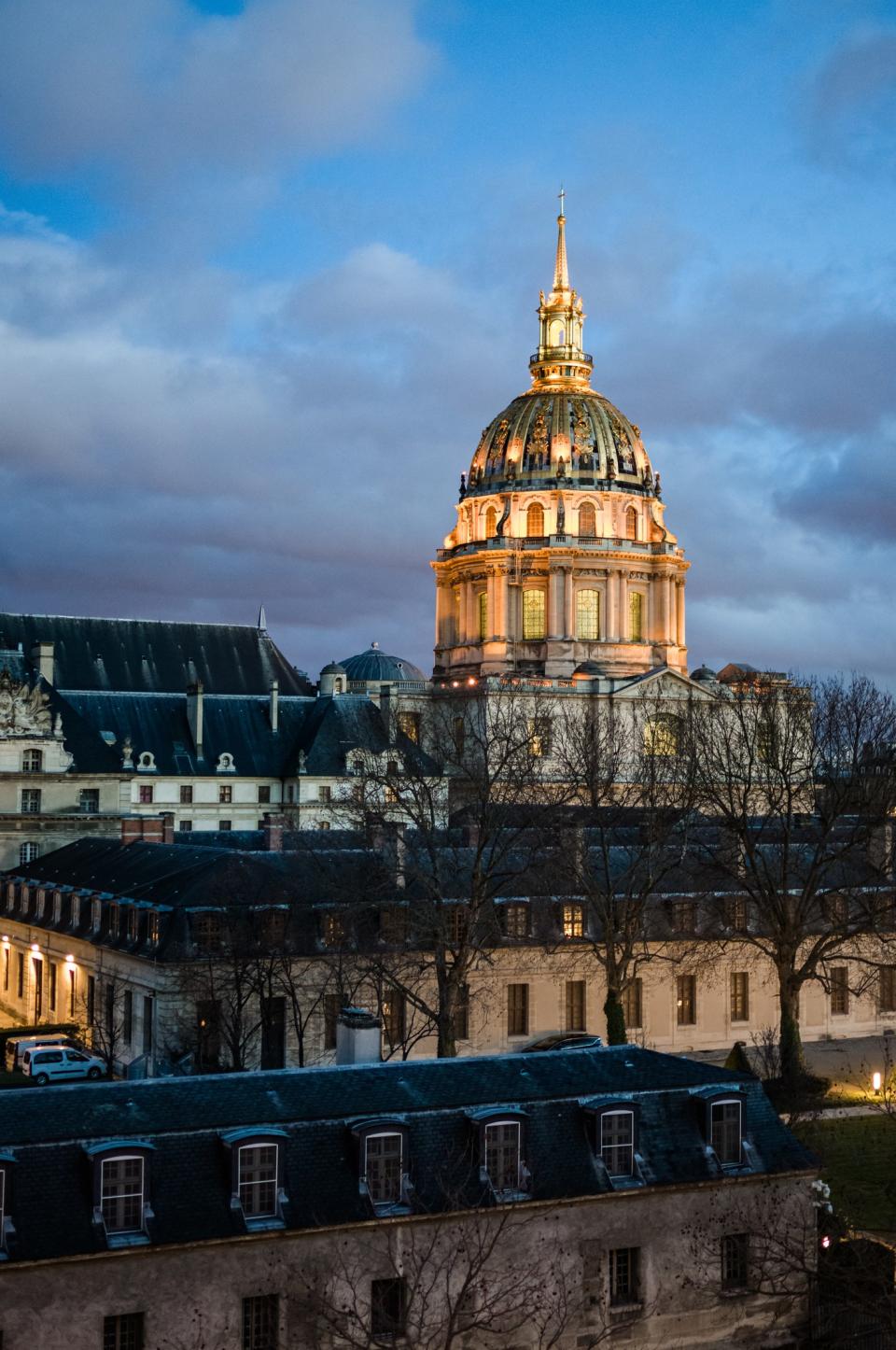
Hotel des Invalides at night, Paris, France
If there’s one arrondissement where the Eiffel Tower most often peeks at you around building corners and peers down from large swaths of sky, it’s the 7th. Iconic landmarks abound, from the Hôtel des Invalides, safekeeper of Napoleon’s tomb, to the grassy Champs-de-Mars, where you’ll find merchants vending Iron Lady keychains and picnic blankets holding apéro spreads.
Slightly away from the monuments, you’ll find sleepy streets, charming cafés, and a taste of Left Bank quartier life. Emma Donnersberg, a Paris- and New York–based interior and furniture designer whose studio is on the broad Boulevard de La Tour-Maubourg, tells AD, “I love the neighborhood because it’s central but also residential. The boulevard where I’m located is quiet. But if you want to reach the 8th arrondissement or the Saint Germain, [where there are many design spaces,] they’re both so close.”
Donnersberg recommends visiting rue Cler, “the best market street in Paris.” There, you’ll find multicolor flower shops bursting with seasonal stems, poissonneries, pâtisseries, boulangeries, fromageries, and more. A quick stroll down rue Cler and you’ll discover why Parisians tend to grocery shop daily—for the literal and visual feast.
Rue Saint Dominique is another local favorite. Says Donnersberg, “You can see the Eiffel Tower, the icon of Paris,” from various points. There, you’ll find elegant Haussmannian façades and the red-and-white-striped awnings of La Fontaine de Mars, a bistro institution since 1908 where you can tuck into hearty Gallic fare like duck confit and cassoulet. And as far as restaurants go, Donnersberg recommends Jaîs, which serves innovative takes on French classics, and Brasserie Thoumieux, featuring an Art Deco interior (think red velvet banquets, mirrored walls, and golden pendant lighting) and traditional brasserie dishes like oeufs mimosa and dover sole in a butter sauce. Donnersberg likes strolling over to rue de Lille, a narrow street that runs parallel to the Seine. There, you’ll find well-stocked antique stores, high-end boutiques, and a handful of art galleries. Donnersberg says, “It’s like a little village.”
Of course, no stay in the 7th would be complete without taking in the Impressionist and Postimpressionist masterpieces at the Musée d’Orsay, as well as paying a visit to Maison Gainsbourg. Opened in September 2023, the former home of Serge Gainsbourg was revived to become a museum, cultural center, and tribute to Paris’s favorite bad boy musician.
10th arrondissement
Go for: vintage and home design stores and people-watching along the canal.
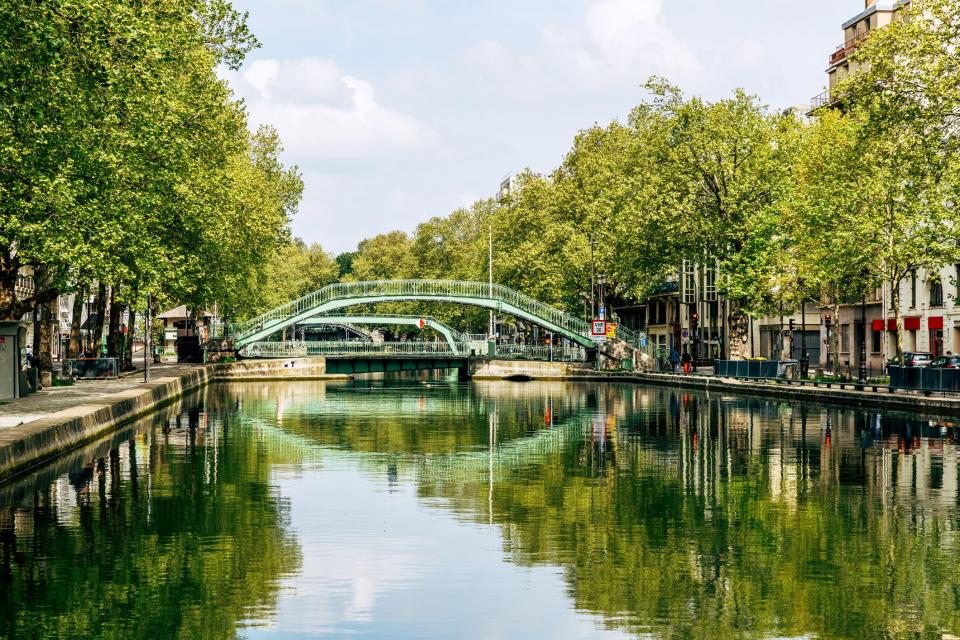
Canal Saint-Martin in Paris, France
Usha Bora, founder of Jamini Design, a French brand specializing in home items created by Indian artisans, has called the 10th arrondissement home since 2004. “It’s such a melting pot of cultures,” Bora tells AD. “I love the fact that you can hear so many languages being spoken in the street; you can get so many types of food. And the fresh markets are amazing.” On sunny days, you’ll find terraces packed with friends sharing drinks, and 20- and 30-somethings cradling beers alongside the Canal Saint Martin.
For design and vintage lovers, the 10th arrondissement has become a compelling destination. Bora says, “One of my favorite vintage stores is Thanx God I’m a VIP, which is on rue Lancry. They have an amazing curated selection of vintage clothes [and accessories]. I can always find something when I’m looking for a special piece.” Just across from Jamini Design, on rue Chateau d’Eau, you’ll find La Trésorerie, offering an impeccable selection of homeware housed in a former treasury building. “They have the most beautiful collection of objects,” Bora says. She also loves the vintage furniture and decor objects at Coin Canal, just steps from the canal, and the book store Artazart, which “has a cool collection of books on art, architecture, fashion, and design.”
The quartier is also increasingly known for its restaurant scene. Bora’s favorites include Les Résistants, Grand Café d’Athènes, and La Verre Volé, a neighborhood gem known for its natural wine selection. Most days, you’ll be hard-pressed to find a terrace table at Chez Prune, a casual, perpetually packed bistro that’s beloved by Parisians. Bora also recommends perusing the Marché Saint Martin, a fresh food market on rue du Château d’Eau, “because of the quality of produce, the meat, the fish—everything is fantastic.”
For hotels, Bora likes the Hôtel Àmoi, a 23-room hotel that champions Parisian artisans (for example, Daniel Gallo for lighting, Philippe Model for woven furniture), and Hôtel Providence, a boutique hotel with rich, maximalist interiors and a popular restaurant with a garden terrace. “There’s always a good vibe.”
11th arrondissement
Go for: the sceniest restaurants and independent shops with high-quality artisan wares.
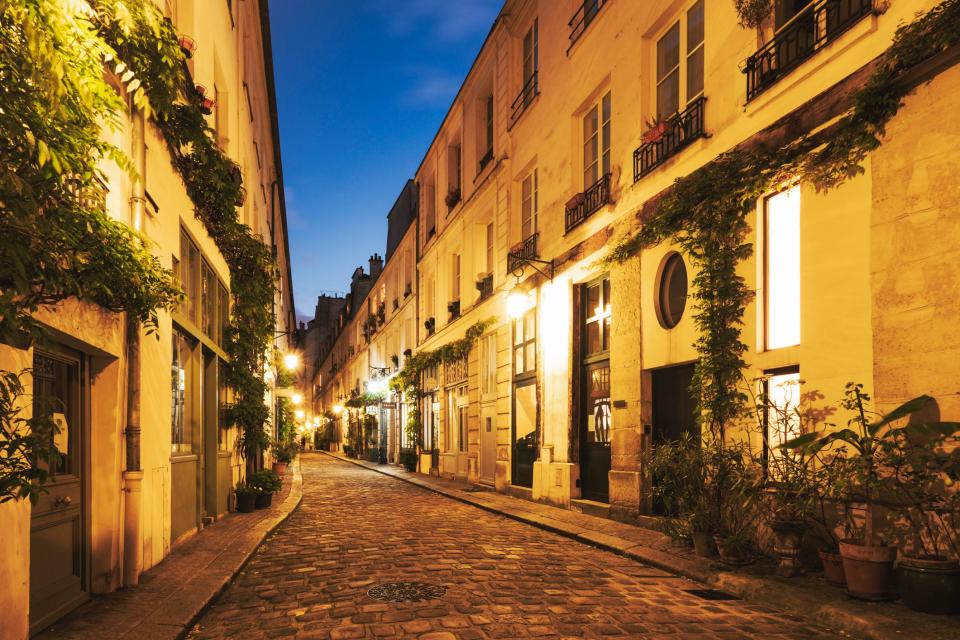
Streets of 11th arrondissement of Paris by night
“I’ve been in the 11th for 13 years,” says Ajiri Aki, author and founder of Madame de la Maison. “The 11th isn’t touristy. It’s where locals hang out. There’s a high concentration of well-known restaurants, where everyone’s trying to get reservations, like at Septime and Chateaubriand.”
Aki tells AD that the central location is a major selling point of her neighborhood. “From my apartment, I can walk to the Canal Saint Martin, Republique, Marais, Belleville…. I can walk to the Buttes Chaumont, one of my favorite parks in Paris.”
The homeware entrepreneur, who curates French-made tableware on her website, has an eye for beautiful design. Among her favorite shops are Landline for “unique, great quality items you can’t find anywhere else”; Antoinette Poison, renowned for their wallpapers, fabrics, and notebooks made with 18th-century prints; and AXS Design, an antique furniture and decor shop.
Notable restaurants include Le Chardenoux from chef Cyril Lignac. Aki says that the “beautiful paintings and frescoes are to die for.” There’s also Le Dauphin, a perennially hot tapas spot designed by Rem Koolhaas and Clément Blanchet, and the recently opened Le Cornichon, an ode to traditional French cafés from chef Bertrand Chauveau, with plates like duck heart brochettes and beef tallow French fries with sauce algérienne.
As far as hotels, Aki recommends a stay at Maison Breguet, a five-star hotel with a contemporary design, bustling restaurant, and serene spa—all of the amenities to feel right at home.
17th arrondissement
Go for: proximity to iconic landmarks, picturesque parks, and a quieter neighborhood vibe.
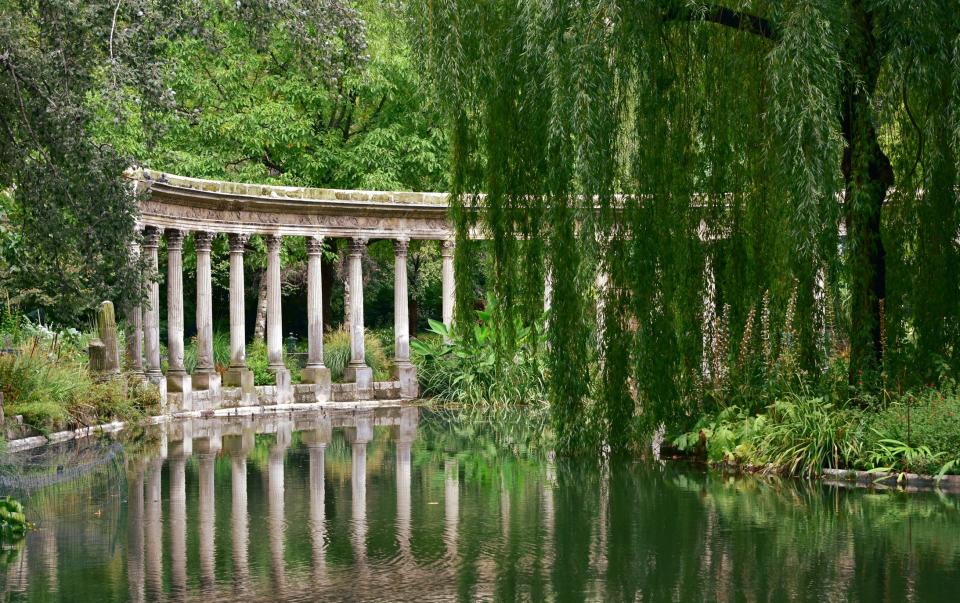
The Naumachia at Parc Monceau, classical colonnade and pond with water reflections. Paris, France.
After years in the southwestern suburb of Vanves, Paris-based photographer and self-proclaimed “homebody” DeMarcus Allen was ready to relocate to a more central area. “In fashion, you have to be ‘out’ a lot, and it started to become a headache to take an Uber every night,” Allen says. “Also, my 15-year stay in Paris needed a refresh.” The 17th arrondissement turned out to be the perfect mix of calm and proximity. “The 17th has the Haussmannian architecture, the sense of community, the wide streets, and the beauty of the neighboring 16th, but with a younger, more energetic vibe,” Allen says.
“I’m a five-minute walk from the Arc de Triomphe, but [being slightly removed] keeps the noise down on my block.” Allen continues, “My run from home to the Eiffel Tower is seven minutes, which still blows my mind. I’ve also fallen in love with Parc Monceau, which has fewer tourists than Jardin des Tuileries.” Monceau is a leafy English-style landscaped park dating back to the 17th century, where families picnic and joggers huff around the perimeter. Other stone’s throw landmarks include the Palais des Congrès, a major venue for conferences and concerts—upcoming shows include the Alvin Ailey Dance Company and Swan Lake. With a growing population, the arrondissement has recently launched initiatives to expand its green spaces through the redevelopment of the Clichy-Batignolles area and the creation of Martin Luther King Park.
For bites and sips, Allen recommends Inform Café, a breakfast, brunch, and lunch spot with craft coffee and housemade Hokkaido (Japanese brioche) with avocado, eggs, and cheddar cheese. Allen is also a fan of G by Gaspard, which pairs fresh-baked naan with international fare. Visitors shouldn’t skip the Batignolles district, its own little village with restaurants, cafés, and an organic market on Boulevard des Batignolles.
The fashion photographer also recommends the pilates studio Studio by Holy, which recently opened a location near his home. For Allen, the 17th has it all. “Here I can be my boring, homebody self, because I have everything in my neighborhood. I never have to leave.”
19th/20th arrondissements: Belleville
Go for: street art, green space, and a dynamic, multicultural food scene.
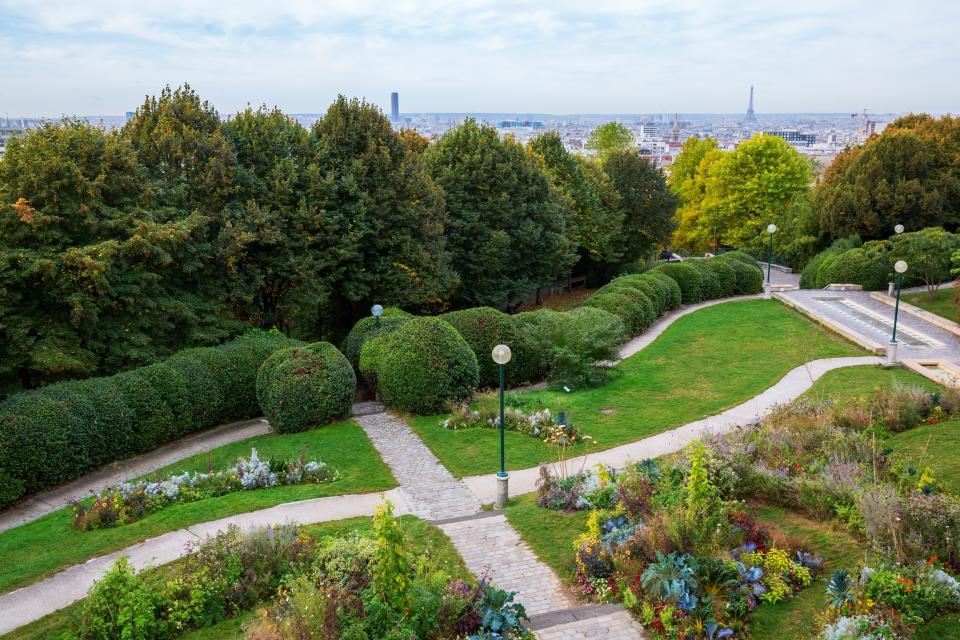
aerial view of the Parc de Belleville in Paris
Straddling the 19th and 20th arrondissements and hugging the borders of the 10th and 11th, Belleville is a destination for street art, great restaurants, natural wine, sprawling parks, and unparalleled Eiffel Tower views. Travel journalist Lane Nieset has called the neighborhood home for five years. Nieset says, “The area has always been known for its creativity and mix of people from all walks of life. As the city’s second Chinatown, you’ll find Asian grocery stores, mom-and-pop noodle restaurants, and markets, but there’s also an influx of culture from Northern Africa and the Middle East. As the area is gentrifying, young families and creatives are also moving in. On the weekends, you’ll see children and dogs playing in cafés and squares while parents gather with friends for wine or lunch.”
Edith Piaf, who once resided at 72 rue de Belleville, left a vibrant music scene in her wake that still rings through the streets today. Other landmarks include the area above Parc de Belleville. “It’s one of the highest natural points in Paris, so it’s a great place for viewing the Eiffel Tower,” Nieset says. “Especially if you’re here on quatorze Juillet [July 14—Bastille day] to see the fireworks.” Nieset also recommends the dog-friendly Parc des Buttes-Chaumont (which made a cameo in Emily in Paris), where people go for sunning and picnicking in warmer months. Lovers of street art have plenty to explore. “Walking around Belleville feels like discovering a new secret on every corner. Street art in the area is constantly evolving. Some messages are political, some are playful. When you’re walking around, it feels like a living museum.”
While the area isn’t known for its design hotels—Nieset recommends Babel, a boutique hotel a few steps from the Belleville metro—it’s overflowing with great restaurants, natural wine spots, and coffee shops. Nieset recommends Cheval D’Or, the Chinese neo-bistro reborn last year under new ownership. “It’s buzzy, it’s vibey,” she says. There’s also the just-opened Cendrillon, near the Parc de Belleville, with Asian-influenced small plates and a tasty frozen mango mezcalita. “I think it’s going to be the drink of the summer,” Nieset says.
One thing about Belleville: It’s residential. It doesn’t necessarily cater to tourists, but, as Nieset explains, “As a visitor, you’ll feel welcome.”
“The area is still finding its groove. It’s not too polished. And I hope it stays that way.”
Originally Appeared on Architectural Digest

